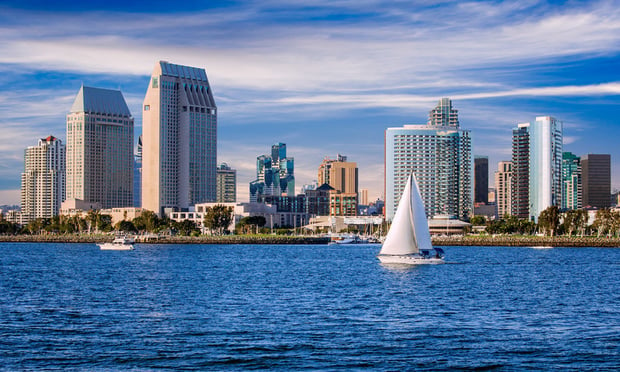 “San Diego is a different market,” said Ryan Grove, director of real estate development at Ryan Companies US, last week on an industrial panel at RealShare Southern California. Ecommerce has been hailed as the driver of the immense industrial activity that we have seen in the last few years, but in San Diego, the ecommerce market has been a minimal driver of activity, limited largely to last-mile centers. Still, San Diego has a robust industrial market with limited space and historically high rents. Instead of ecommerce, it is being driven by a dynamic demand from a networker of smaller users.
“San Diego is a different market,” said Ryan Grove, director of real estate development at Ryan Companies US, last week on an industrial panel at RealShare Southern California. Ecommerce has been hailed as the driver of the immense industrial activity that we have seen in the last few years, but in San Diego, the ecommerce market has been a minimal driver of activity, limited largely to last-mile centers. Still, San Diego has a robust industrial market with limited space and historically high rents. Instead of ecommerce, it is being driven by a dynamic demand from a networker of smaller users.
“San Diego is at the end of the road,” Grove said on the panel. “We don't see a lot of big distribution centers. We are seeing industrial rents absolutely hitting high water marks for San Diego. We all jumped to ecommerce as a reason why this has driven the market.” But, for San Diego, that activity has really only been on the delivery side of ecommerce, he added.
As a result, San Diego's stock of product looks different than the stock in Orange County and Los Angeles, where larger buildings are more common and in need. In San Diego, the average building size in below 100,000 square feet, and often closer to 40,000 to 80,000 square feet. “A 300,000-square-foot building is big for San Diego, but we are pushing buildings in that 200,000-square-foot range and capitalize on those large blocks. We are bullish on trying to capture that market and the rent premium for those companies”
Recommended For You
Want to continue reading?
Become a Free ALM Digital Reader.
Once you are an ALM Digital Member, you’ll receive:
- Breaking commercial real estate news and analysis, on-site and via our newsletters and custom alerts
- Educational webcasts, white papers, and ebooks from industry thought leaders
- Critical coverage of the property casualty insurance and financial advisory markets on our other ALM sites, PropertyCasualty360 and ThinkAdvisor
Already have an account? Sign In Now
*May exclude premium content© 2025 ALM Global, LLC, All Rights Reserved. Request academic re-use from www.copyright.com. All other uses, submit a request to [email protected]. For more information visit Asset & Logo Licensing.








